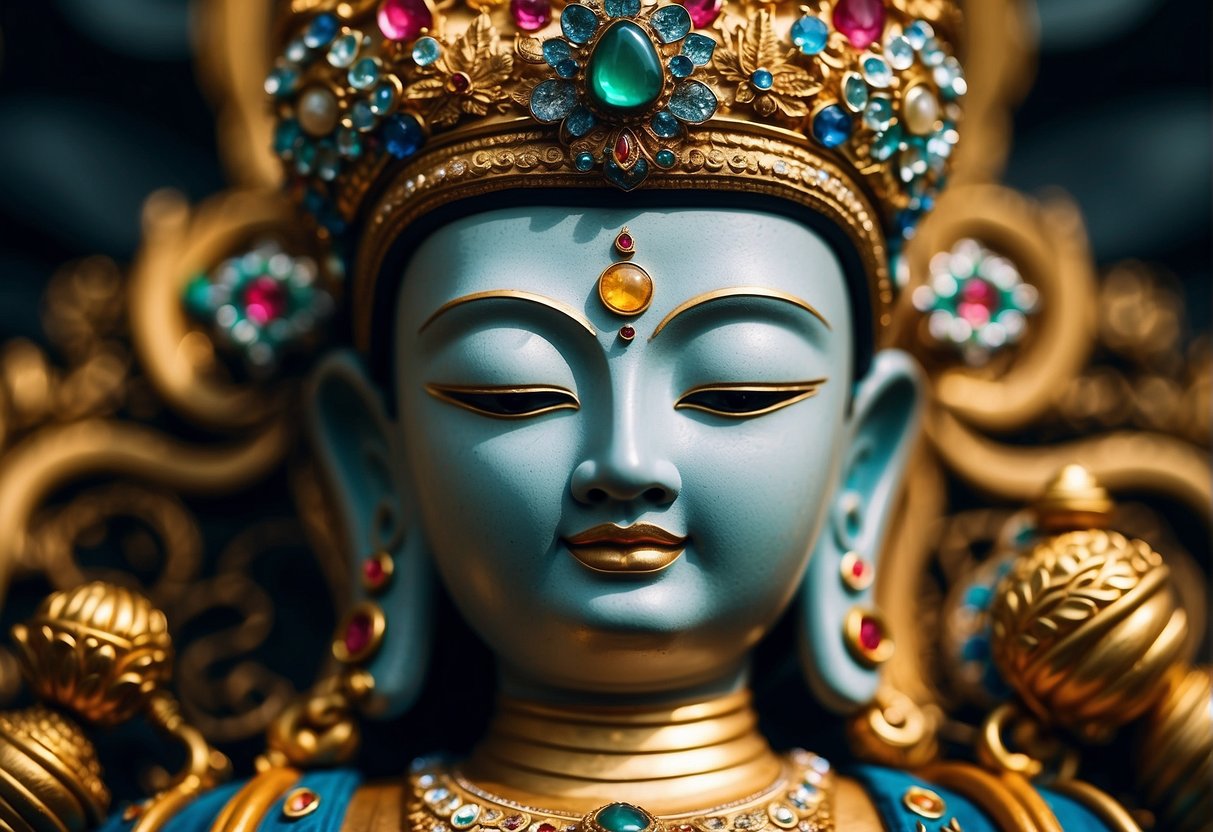Bodhisattva Guan Yin is a prominent figure in Mahayana Buddhism, particularly in East Asian countries. She is considered the embodiment of compassion and is revered by millions of Buddhists worldwide. Guan Yin is often depicted as a female figure, although she is also sometimes depicted as male or gender-neutral. In Buddhism, a bodhisattva is an …
Symbols Explained
Bodhisattva Universal Worthy, also known as Samantabhadra, is an important symbol in Buddhism. He is considered one of the Four Great Bodhisattvas in Mahayana Buddhism and is associated with practice, meditation, and virtue. The name “Universal Worthy” signifies his all-encompassing virtue and his ability to benefit all beings. In Buddhist art, Bodhisattva Universal Worthy is …
Mañjuśrī is a bodhisattva in Mahāyāna Buddhism, who is associated with wisdom and is one of the most important iconic figures in Mahāyāna art and literature. The name Mañjuśrī means “Gentle Glory” in Sanskrit, and he is also known as Mañjuśrīkumārabhūta, which means “Mañjuśrī, Still a Youth” or “Prince Mañjuśrī.” As a bodhisattva, Mañjuśrī represents …
The parasol is a significant symbol in Buddhism, representing protection and royalty. It is believed to protect people from illnesses and inclement weather, making it a symbol of both physical and spiritual protection. In addition, the parasol is highly ornate, with a dome that represents wisdom and a skirt that represents compassion. In Tibetan Buddhism, …
The Treasure Vase is one of the eight auspicious symbols in Buddhism, and it is a symbol of wealth and prosperity. The vase is typically used to collect money, which alludes to material wealth. However, its true spiritual meaning relates to the liberation of the mind. The Treasure Vase is a somewhat ironic symbol. According …
The Victory Banner symbol holds significant meaning in Buddhism, representing the triumph of enlightenment over ignorance. This symbol has been used in Tibetan Buddhism to celebrate enlightenment and the victory of the Buddhist doctrine over all harmful and pernicious forces. The banner is also believed to represent the complete victory of one’s own and others’ …
Animals have always played an essential role in Buddhism, with many creatures serving as symbols of important teachings and concepts. These animals are often depicted in Buddhist art and literature, and their symbolic meanings are deeply ingrained in Buddhist culture. One of the most well-known animal symbols in Buddhism is the deer, which represents peace, …
The Eight Auspicious Symbols are a set of sacred symbols that hold great significance in Buddhism. These symbols represent the teachings of Buddha, his victory over the demon Mara, and his protection from suffering. Each symbol has a unique meaning and is used in various ceremonies and rituals to celebrate the Buddha’s teachings and the …
The lotus flower has long been a powerful symbol in Buddhism. Its significance can be traced back to ancient times, where it was believed to represent purity and spiritual awakening. Today, the lotus flower remains an important symbol in Buddhist culture, representing the journey towards enlightenment. In Buddhism, the lotus flower is often used as …
The alms bowl is one of the most significant symbols in Buddhism. It is a begging bowl that is used by monks for collecting and receiving food and other offerings from laypeople. The bowl is a symbol of the monk’s humility and detachment from material possessions. It is also a reminder of the Buddha’s teachings …

